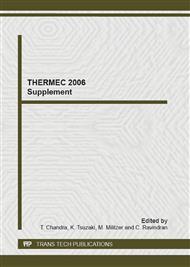p.164
p.169
p.175
p.181
p.187
p.193
p.199
p.205
p.209
The Study of Immobilization Thermal-Sensitive Hydrogel onto ePTFE Film Use the Cold Plasma and Photo-Grafting Technique
Abstract:
Expanded polytetrafluoroethylene (ePTFE) is a bioinert material. To improve the ePTFE film biocompatibility, the cold plasma technology was used with acetic acid as monomer to deposit onto ePTFE film and then (N-isopropylacrylamide) was grafted onto the surface by photo-grafting. The characteristics of the surface were evaluated with X-ray photoelectron spectroscopy (XPS), FTIR and water contact angle. It was found that the contact angle of water on the untreated ePTFE significantly decrease from125° to 72° after ePTFE film being treated with acetic acid plasma deposition treatment. Due to the hydrophilicity of poly(N-isopropylacrylamide), the contact angle of water on the ePTFE-g-NIPAAm approached to 0°.
Info:
Periodical:
Pages:
187-192
Citation:
Online since:
February 2006
Authors:
Price:
Сopyright:
© 2007 Trans Tech Publications Ltd. All Rights Reserved
Share:
Citation:


